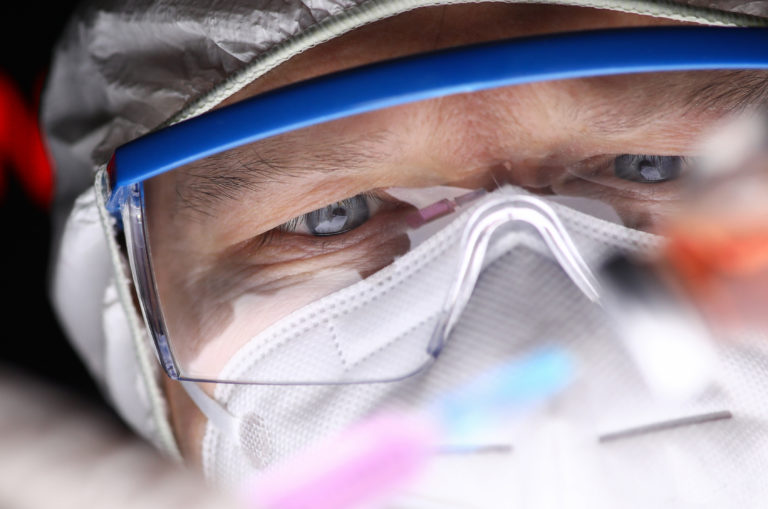Smartphones and mobile technology dominate our personal lives—more than 5 billion people in the world own a smartphone, according to Pew Research. This trend toward mobility has carried over into the realm of patient care. Especially over the past few years, the positive impact this technology has on quality of care and patient engagement is well documented.
This year, however, the coronavirus pandemic has shed an even brighter spotlight on this technology and the need to enable healthcare workers to quickly adapt their workflows to accommodate an influx of patients. Every colleague in the organization has had to get creative to continue providing high-quality care, admitting a high volume of patients and collaborating with colleagues across multiple departments.
Before the pandemic, clinicians had a number of different communication methods to use for limited purposes :
- Pagers for urgent interfacing to or from providers
- Desk phones for anyone who is particularly difficult to get ahold of
- Collaboration was often in person 1-1 and directly with the patient
Healthcare organizations knew then that this system was not working. At best, it’s difficult for clinicians to keep track of all of these communication channels. At worst, it could lead to errors or delays of care by way of crossed wires and missed messages. The migration of these methods to a smartphone model is mirroring the change society was already making. The need for better collaboration was clear—the pandemic has only exacerbated and accelerated it.
The New Normal
Then the coronavirus pandemic arrived in the U.S. and facilities across the country mobilized to prepare scarce personal protective equipment (PPE), tests and other supplies, strengthen critical technological integrations and support their frontline workers however they could. At Mobile Heartbeat, we approached the pandemic as a unique opportunity to support our customers in this endeavor, and make sure we could provide as many resources as possible to simplify and accelerate their workflows and promote a safe environment for all frontline staff.
As we have worked with health systems this year to cultivate a more collaborative workplace for healthcare employees, we’ve witnessed an evolution of communication towards unity and away from outdated and disjointed tools. Here are some of the key differences we’ve observed through the use of a unified smartphone platform, and how we think these adaptations will change care-team collaboration in the coming year.
1. Demanding Reliability
It’s hard to overstate the value of a reliable technology in a hospital setting. With a pandemic causing patient surges and reducing available supplies and staff bandwidth, reliable technology becomes an absolute must—a technological failure could have grave consequences.
The coordination of patient care never stops, especially during a pandemic. So we made sure our communication solution would support round-the-clock care with 100 percent uptime. When frontline workers don’t have to worry about their critical tools failing them, they can focus more on the highest priority—caring for patients.
2. Collaborating Virtually for Infection Control
Back in the spring, when healthcare organizations were coming up against PPE shortages and experts knew very little about the virus or how it spread, facilities everywhere had to get creative in order to preserve supplies and mitigate infection risk among frontline employees. Organizations used InterApp Launch Points and universal messaging to provide rapid information on PPE status and use, including videos on how to properly don and doff equipment.
One such solution has involved leveraging nurse call and telemetry integrations. Because clinicians can receive patient alerts directly to our platform, clinicians have been able to make informed decisions about whether or not they need to enter the patient’s room. The responder can also instantly inform the rest of the patient’s care team that they are taking action, which prevents frontline employees from having to repeatedly don and doff PPE. A key part of this workflow is minimizing interaction with the patient and the risk associated with doing in-person patient communication.
3. Scaling for Field Hospitals and Surge Units
With the ongoing influx of patients with a highly communicable virus, many healthcare organizations have had to expand their ICU into other units or even establish field hospitals to accommodate those seeking care. A unique problem facing the clinicians in these units is lack of access to the tools they would otherwise have in the ICU.
That’s why we developed a process for scaling up communication and collaboration to these overflow units in a seamless way. Easily designate and re-designate units and assign the colleagues who work within them to facilitate smoother coordination of patient care across temporary units. Through our Web Admin, facilities were able to turn cafeterias into temporary ICUs and assign beds and care teams to each patient in a bed. All through configuration—no coding required.
With the surge units and field hospitals came a rapid influx of temporary workers who needed to be supported by the same technological infrastructure as existing employees. One health system that was severely impacted had workers come in from across the country, and with minimal logistical overhead they were able to grab a smartphone and log in. Our platform enabled them to find people easily—patient care teams, functional roles, etc. and then quickly collaborate around patient care. By removing the common barriers to rapid patient care, we worked with this organization to accelerate these personnel operations.
4. Enabling Multidisciplinary Collaboration
Healthcare organizations have always required a significant degree of cross-department collaboration. Nurses especially need to reach colleagues across other units, departments or even in different facilities. Providers who work in multiple organizations need to be able to access the same patient information and colleague directories that the rest of the organization has.
By connecting colleagues throughout the enterprise, even including ancillary staff like environmental services (EVS), supply chain, pharmacy and transport, frontline workers have one-touch access to everyone they need to advance patient care. If a unit is running low on PPE, supply chain can quickly get looped in to route supplies from a lower-priority unit or provide updates on when the next shipment is expected to arrive and distribute accordingly. If an infectious patient is moved from their existing bed to a quarantined floor, staff can alert the EVS team that the now-vacant bed needs additional cleaning before it can accept a new patient.
These workflows have always existed within the modern healthcare organization, but just last year, it was not uncommon to see clinicians carrying a set of outdated communication devices. The coronavirus pandemic has demanded a smarter, more unified and reliable solution that clinicians can quickly access anytime they need it. Headed into 2021, we expect to see more healthcare organizations moving in the direction of a comprehensive collaborative platform that will return time to care for their frontline employees.
Finally, we recognize organizations have been challenged financially, but this technology offers an operational relief that frontline workers need. We established a program that acknowledges this short-term challenge and makes it easier for organizations to get the technology they need.
We know better communication and collaboration is valuable—essential, even. The coronavirus pandemic has highlighted the need and value. Mobile communication dominates our personal lives, it has huge potential value connecting caregivers in pursuit of better patient care.





